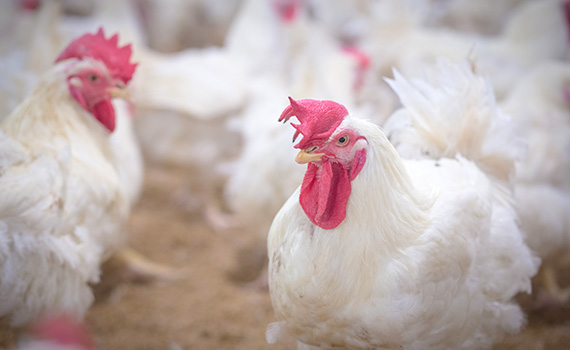Chicks may hold clues to lameness in older birds
Lameness in some poultry flocks has researchers searching for the cause, Suzanne Dougherty, DVM, a consulting poultry veterinarian based in Alabama, told Poultry Health Today.
Dougherty is working with a nutrition company on what’s called “The Bone Project,” which is aimed at determining what’s normal and what’s abnormal in the young chick’s life. The goal is to help customers reduce or eliminate lameness later in their birds’ life cycle.
In affected flocks, chicks less than 1 week old show tiny microfractures and inflammation in the leg bones, which can lead to lameness in older broilers, she said.
In other cases, Dougherty said young chicks may appear clinically normal with a gait score of zero but in 15 to 30 days develop lameness issues.
Producers have found rickets in 2- and 3-day-old chicks. Research shows it’s not due to broiler feed, she said, which raises the question of whether the problem originates with breeders.
One other possibility: Lameness could stem from a bacterial insult during the embryonic stage or the first week of life, which may result from eliminating or reducing the use of antibiotics.
These are avenues that need exploring, she said, but noted that so far, leg-bone issues have not been associated with different types of production systems.
A good environment for the bird is always ideal. Anything producers can do to reduce stress on that bird will help. While nutrition is a component of the solution to these problems, it won’t be the sole solution, Dougherty said.
Posted on January 7, 2019
 We’re glad you’re enjoying
We’re glad you’re enjoying










